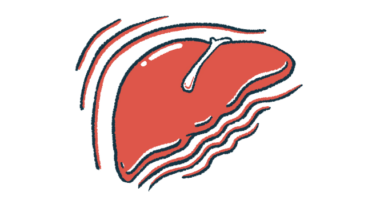Trikafta Improves Lung Function in Children Ages 6–11 in Clinical Trial
Study aided European Commission in approving Trikafta for children 6 and up

Treatment with the triple-combination therapy Trikafta improved lung function and eased respiratory symptoms for school-aged children with cystic fibrosis (CF) in a Phase 3 clinical trial.
“I was both surprised and delighted to see that, even this early in the disease trajectory and despite the brief treatment duration, the children experienced noticeable improvements,” Marcus Mall, MD, study investigator at Charité – Universitätsmedizin Berlin said in a press release.
Mall noted that results from this study helped support the European Commission’s decision to expand the approval of Trikafta — marketed as Kaftrio in Europe — for eligible children with CF as young as 6. Similar expansions were also recently approved in the U.S. and Canada.
“That [approval] means we are already in a position to treat children in this age group. I expect that the earlier initiation of treatment targeting the disease’s causative defect will produce significant improvements to the long-term health of patients with cystic fibrosis,” Mall said.
Results were detailed in the study, “Efficacy and Safety of Elexacaftor/Tezacaftor/Ivacaftor in Children 6 Through 11 Years of Age with Cystic Fibrosis Heterozygous for F508del and a Minimal Function Mutation: A Phase 3B, Randomized, Placebo-Controlled Study,” published in the American Journal of Respiratory and Critical Care Medicine. The work was funded by Vertex Pharmaceuticals, which markets Trikafta.
Cystic fibrosis is caused by mutations that impair the functionality of the CFTR protein, which normally helps regulate the flow of water and salts into and out of cells. The most common CF-causing mutation, found in about nine out of 10 patients, is called F508del.
Trikafta contains three CFTR modulators, therapies that can boost the performance of CFTR in people with specific disease-causing mutations. It’s approved in Europe and elsewhere for patients with at least one copy of the F508del mutation.
This clinical trial (NCT04353817) enrolled 121 children with CF ages 6 to 11. All had one copy of the F508del mutation and one minimal function mutation, which results in a CFTR protein with minimal ability to function. Participants were randomized to take Trikafta or a placebo for 24 weeks, about six months.
The study’s main goal was to evaluate the effect of treatment on lung clearance index (LCI), a measure of respiratory function that’s particularly sensitive to damage in small airways that develops in early CF.
“This type of clinical study remains too much of a rarity in pediatric drug development. The inclusion of control groups is often neglected in pediatric research,” Mall said. “Instead, adult data are used to extrapolate effects from adults to children. But children are not simply small adults. High-quality studies are therefore crucial to the development of safe and effective drugs for children.”
The average LCI at the trial’s start was about 10 units in both groups. After 24 weeks, average LCI score decreased (improved) by 2.29 units for those on Trikafta, compared to 0.02 units for those on a placebo.
“Our results indicate [Trikafta] treatment is associated with a robust and sustained improvement in small airway function and pulmonary ventilation in children with CF,” the researchers wrote.
Another measure of lung function — forced expiratory volume in one second — also improved significantly with Trikafta compared to a placebo, as did measures of sweat chloride levels.
Trikafta also significantly eased the children’s respiratory symptoms, as measured with the child’s version of the Cystic Fibrosis Questionnaire Revised (CFQ-R). Average scores improved by nearly six points for those on Trikafta, compared to less than one point for those on a placebo. The researchers noted that an improvement of at least four points on the CFQ-R is considered clinically important.
“Improvements in respiratory symptoms and CFTR function, similar to those seen in adolescents and adults, were observed in children given [Trikafta] compared with placebo,” they wrote.
Most safety-related events reported in the trial were consistent with symptoms of CF. The most common side effects reported in children on Trikafta were headache and cough. One child on Trikafta withdrew from the study after developing a serious rash, which resolved after discontinuing the treatment.
“Safety data were consistent with the established safety profile for [Trikafta], with no new safety concerns observed,” the researchers concluded.
Nearly all the children in this trial with recorded race/ethnicity data were white. This is partially because the F508del mutation is more common in white populations than other ethnicities, but the homogeneity of the participants was nonetheless noted as a study limitation.
The researchers also noted that further work to test Trikafta in younger ages is ongoing.
“That would place us in a position to start causal treatment for cystic fibrosis as early as early infancy, which would hopefully prevent even early-stage damage to the lungs and possibly even other organs like the pancreas. Very gradually, we are working our way closer to this target,” Mall said. “Currently, we are testing the safety and efficacy of this triple combination therapy in children aged between 2 and 5 years.”








